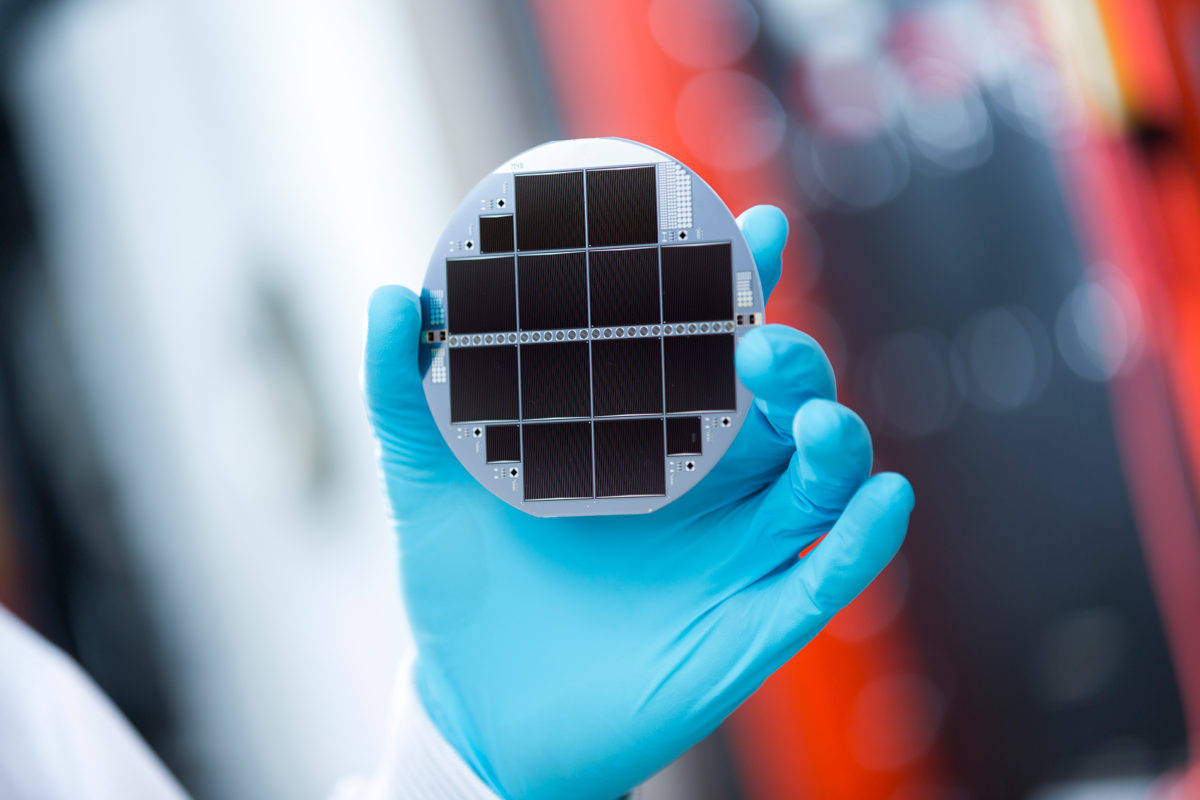Researchers at Germany’s Fraunhofer Institute have achieved a record 22.3% efficiency for a silicon based, multi-junction solar cell, through advances made in tandem cells.
Researchers have been working on the MehrSi project for more than a decade, with the new results published in the international ‘table of best research cell efficiencies’ on Christmas Day.
The achievement was recorded using a multi-junction cell made with a combination of silicon and III-V compound semiconductor materials – combining group III elements aluminum, gallium and indium with group V counterparts nitrogen, phosphorus, arsenic and antimony – with the materials grown directly on the primary silicon semiconductor component. The multi-layered active cells absorb wider levels of radiation than pure silicon alone.
Using III-V cell materials – a technique known since the 1950s and used to create 27% efficient solar panels on NASA’s Mars Rover – has long been prohibitively costly for mass production but growing III-V layers directly on the solar cell is a much cheaper approach than using silicon bonding technologies to create tandem cells, thus offering promise for future commercial application.
New research center could accelerate efficiencies
Rather than using silicon as a cell’s sole absorber material – the most common practice in the market at present – tandem cells, according to Fraunhofer, “combine several absorber materials, enabling a better energetic use of the solar irradiance spectrum”.
Further enhancing radiation absorption capabilities from the solar spectrum by combining different semi-conductor materials, the researchers are now attempting to surpass the theoretical efficiency limit of 29.4% for a single-junction silicon solar cell first suggested in the Journal of Photovoltaics in 2013. Further descriptions of the Fraunhofer research team’s methodology are available here.
Fraunhofer Institute Director Dr. Andreas Bett added: “In Freiburg, we are presently building a new research center for high efficiency solar cells. Our work on tandem cells will be carried out in the new facilities upon [their] completion in 2020. With the improved technical infrastructure, we expect the developments in multi-junction solar cells based on silicon to accelerate rapidly.”
The Fraunhofer ISE made headlines last year after achieving a record for solar module efficiency of 41.4% during the CPVMatch project. That November milestone used high-concentration PV technology, which requires very high levels of direct radiation.
This content is protected by copyright and may not be reused. If you want to cooperate with us and would like to reuse some of our content, please contact: editors@pv-magazine.com.



“have achieved a record 22.3% ”
Are you sure of this data? It seems pretty low, also considered that in article connected to the link it is mentioned a 33,3% efficiency for the same kind of cell. .
Please see attached link https://www.ise.fraunhofer.de/en/press-media/press-releases/2019/photovoltaic-trend-tandem-solar-cells-record-efficiency-for-silicon-based-multi-junction-solar-cell.html which details figures.
Also, 33.3% was never mentioned in the article, the higher limit spoken about concerned concentrated solar, which you can find out more about through following the linked hypertext in our article.
Many thanks.